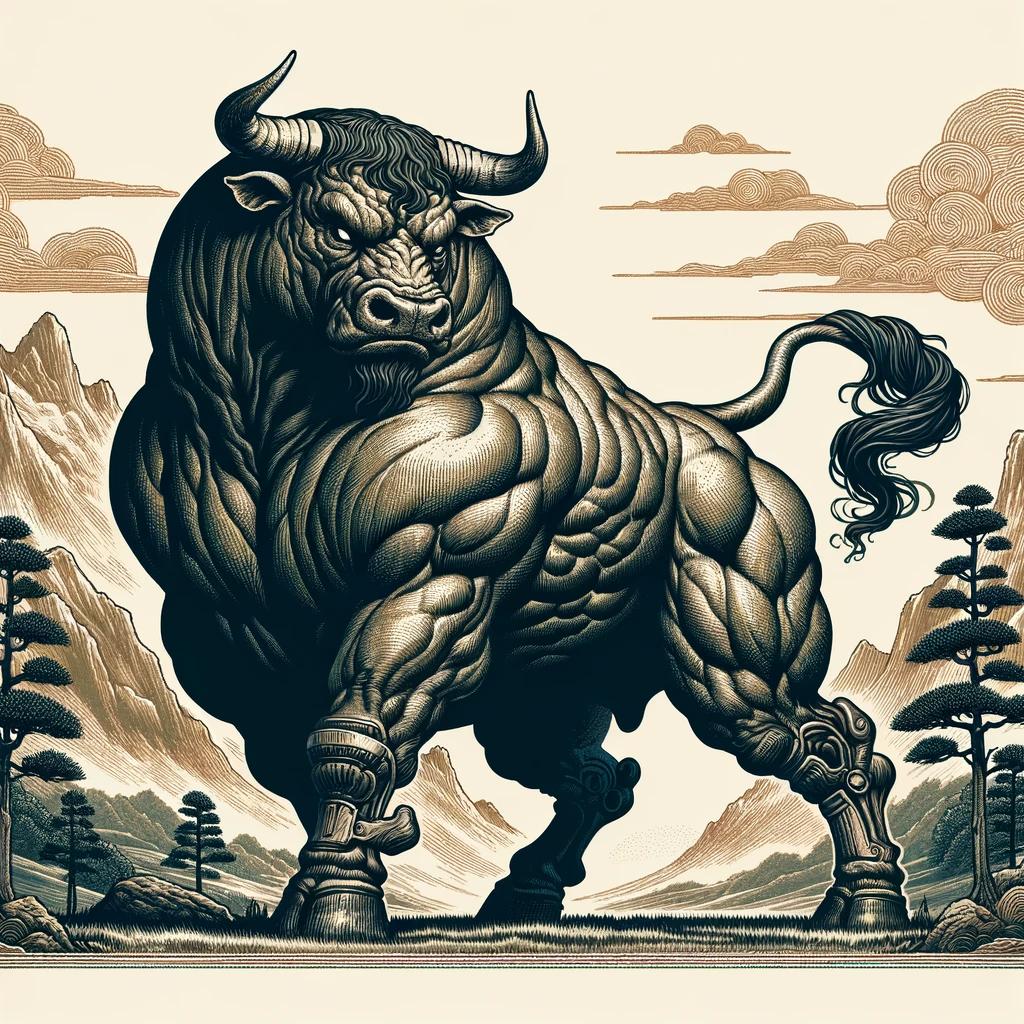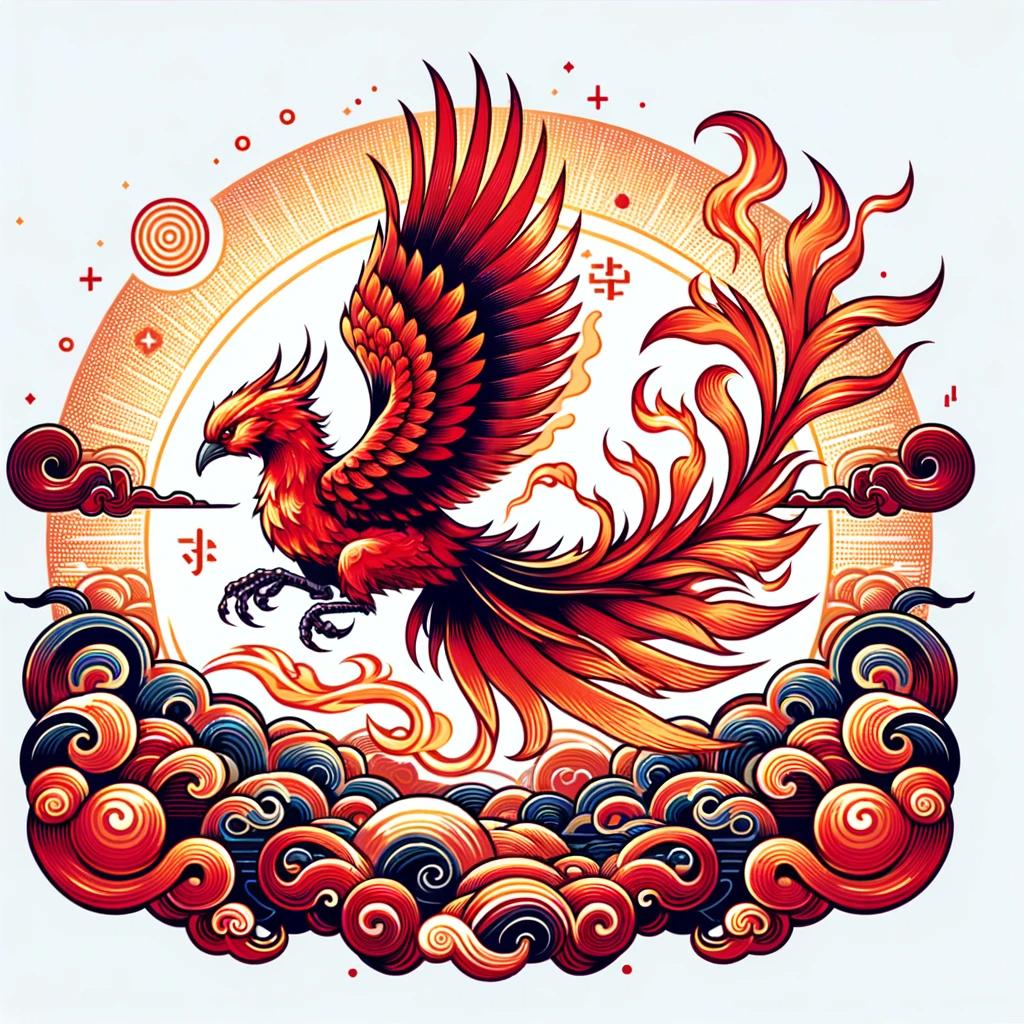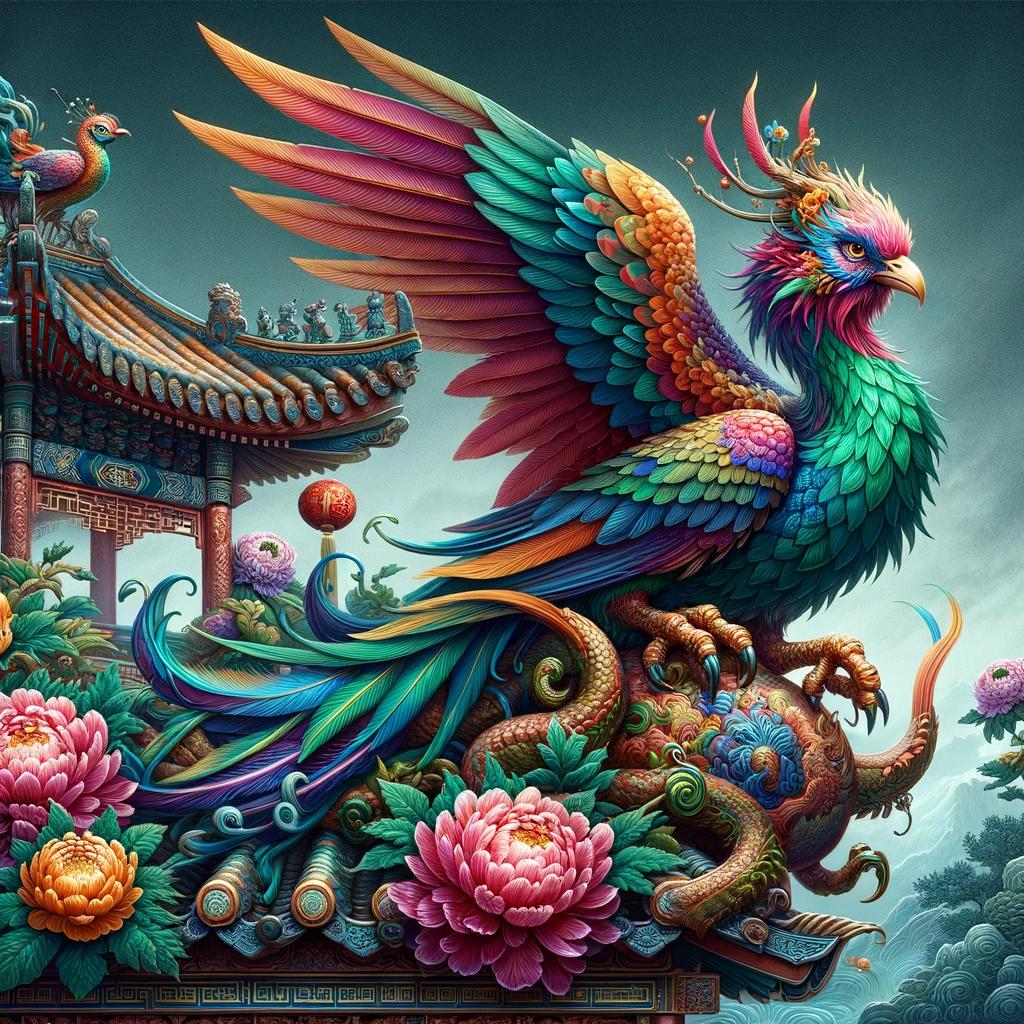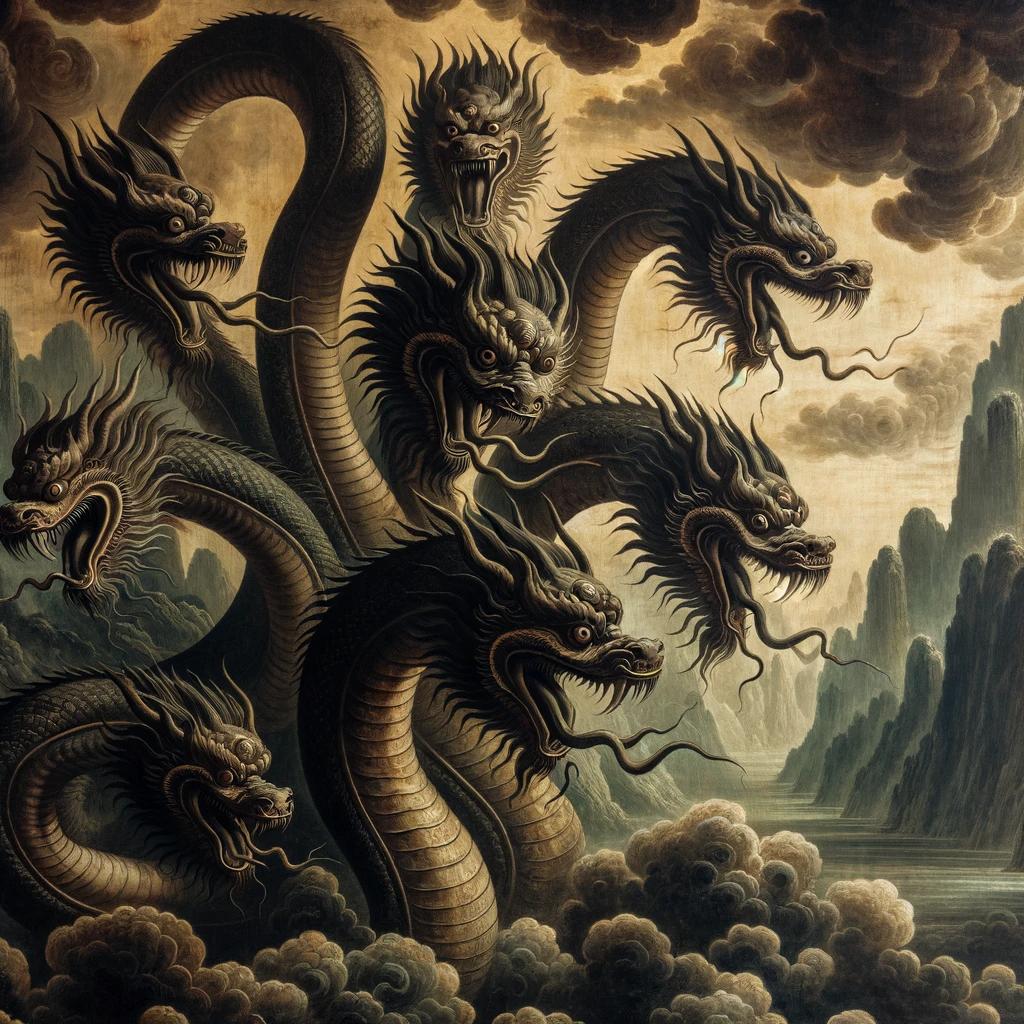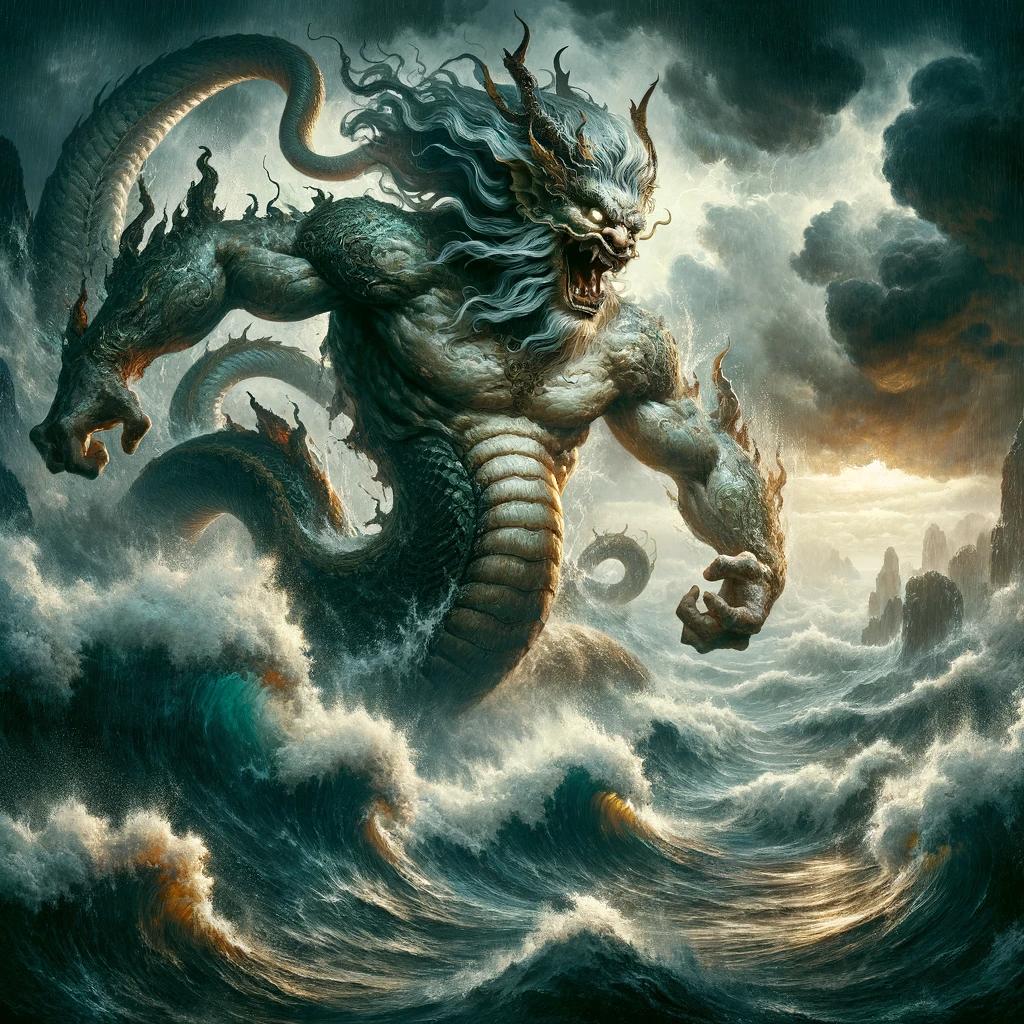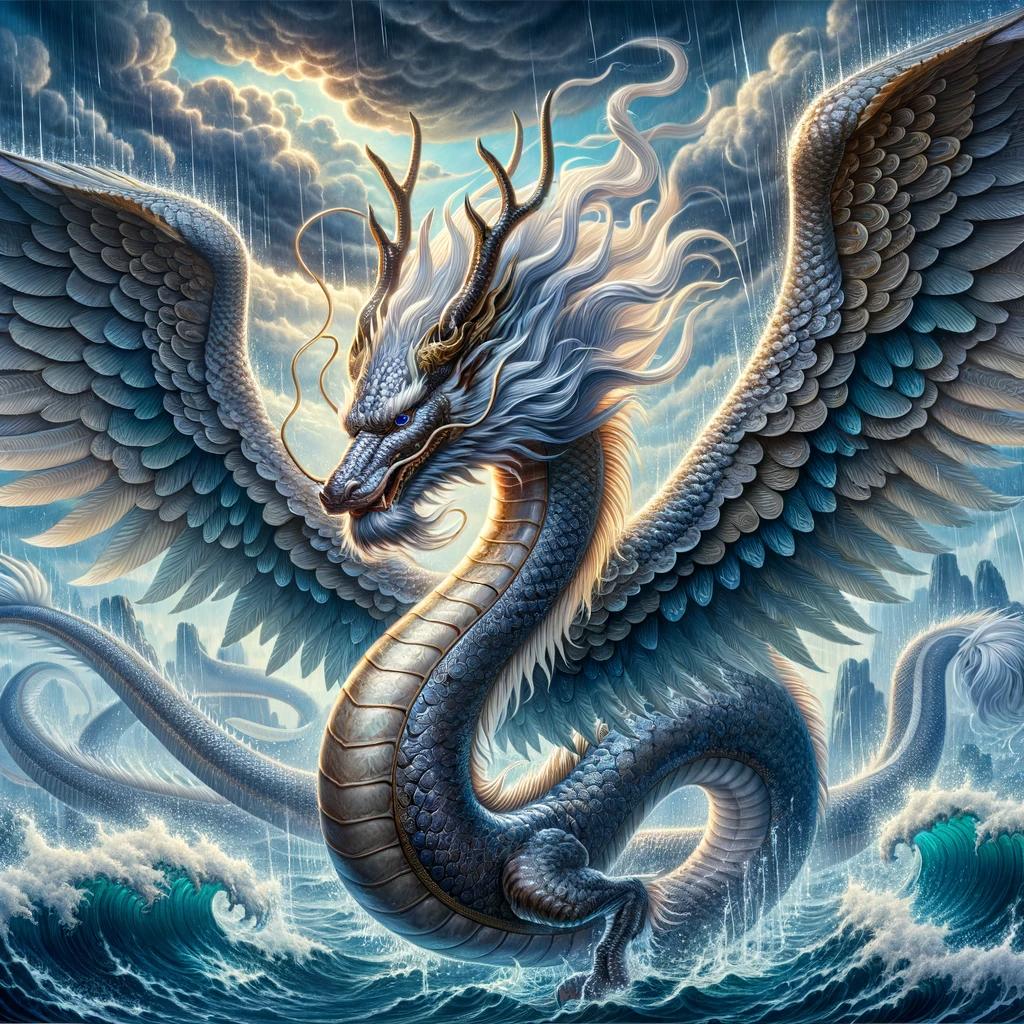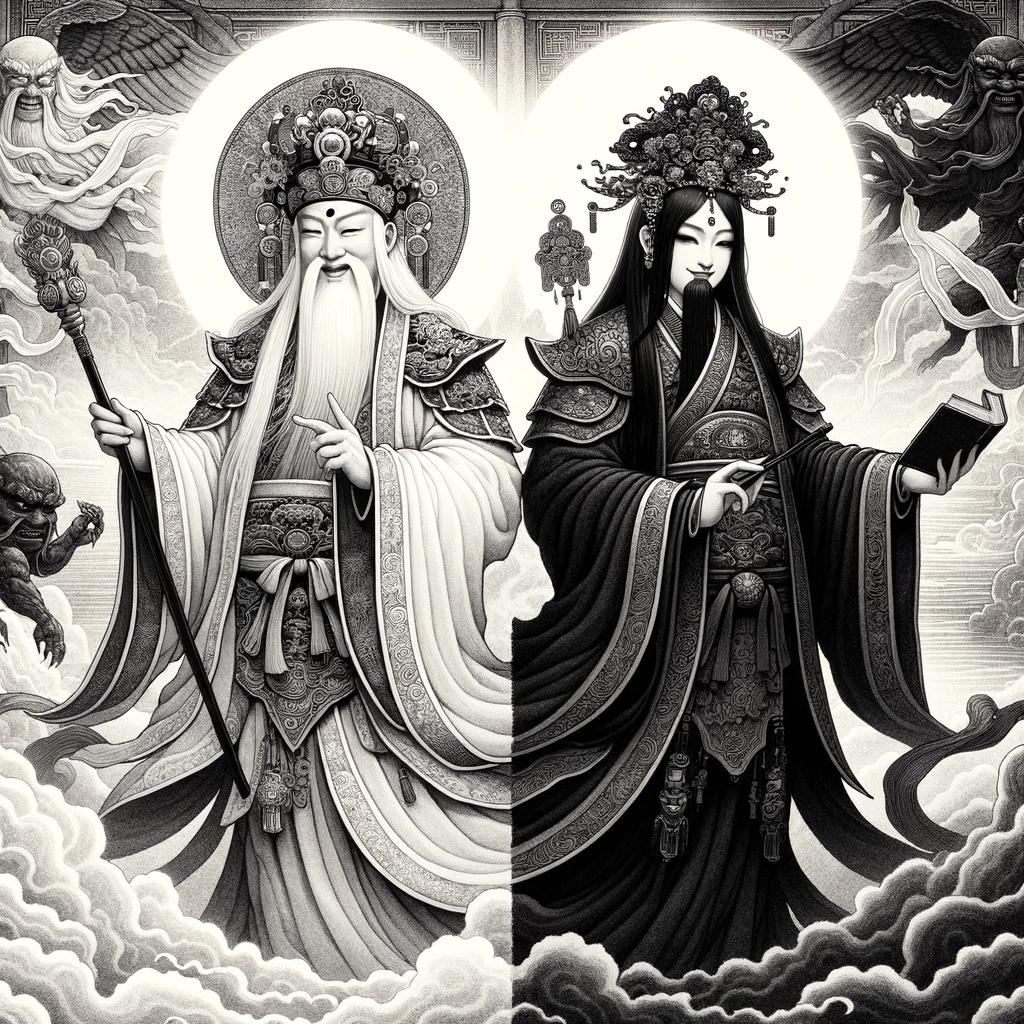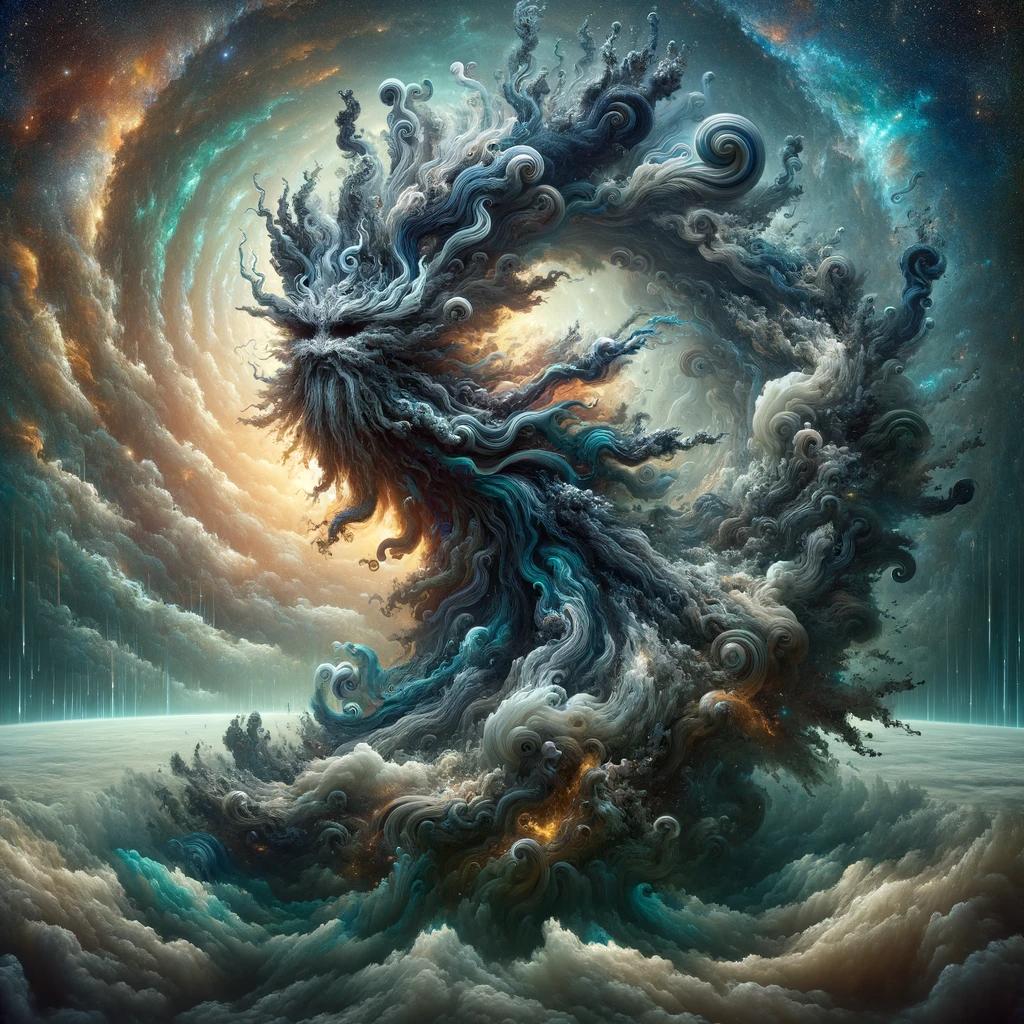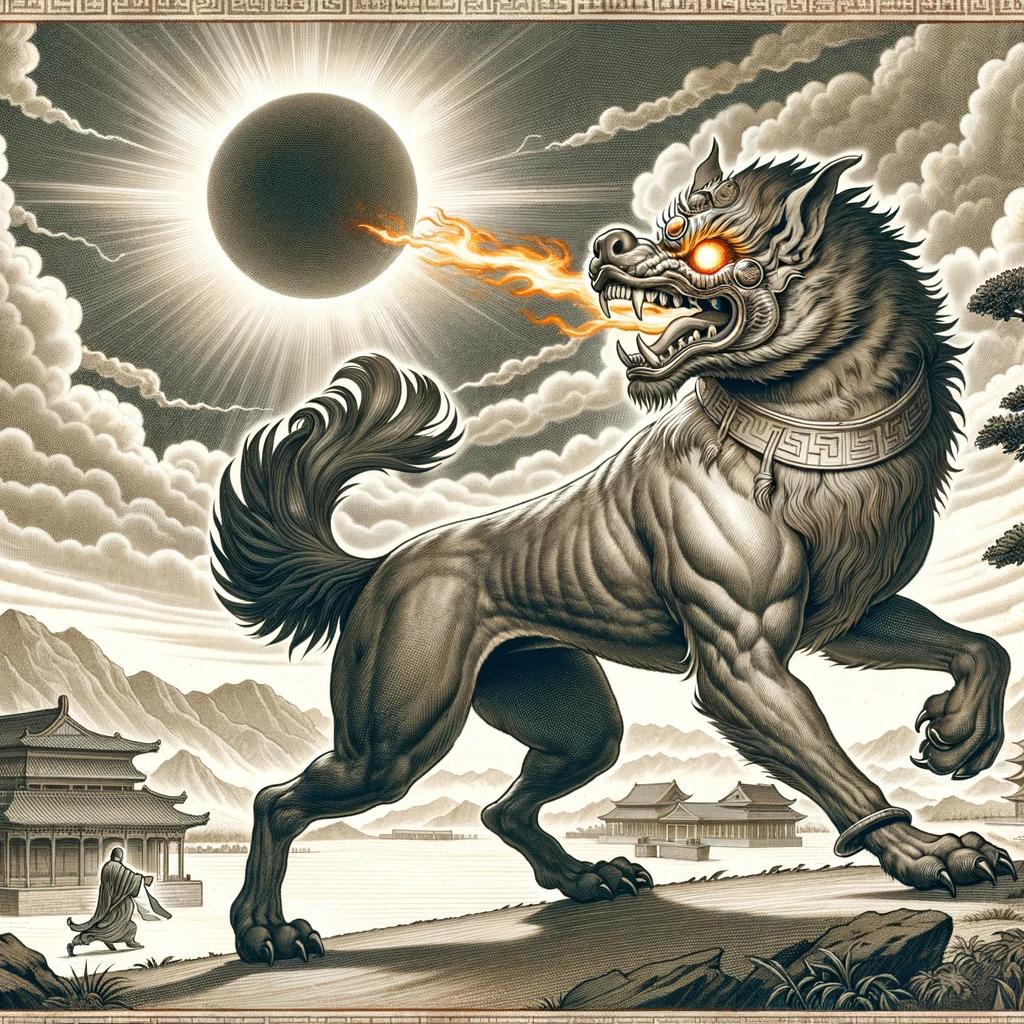Exploring the Enigmatic Kui in Chinese Mythology
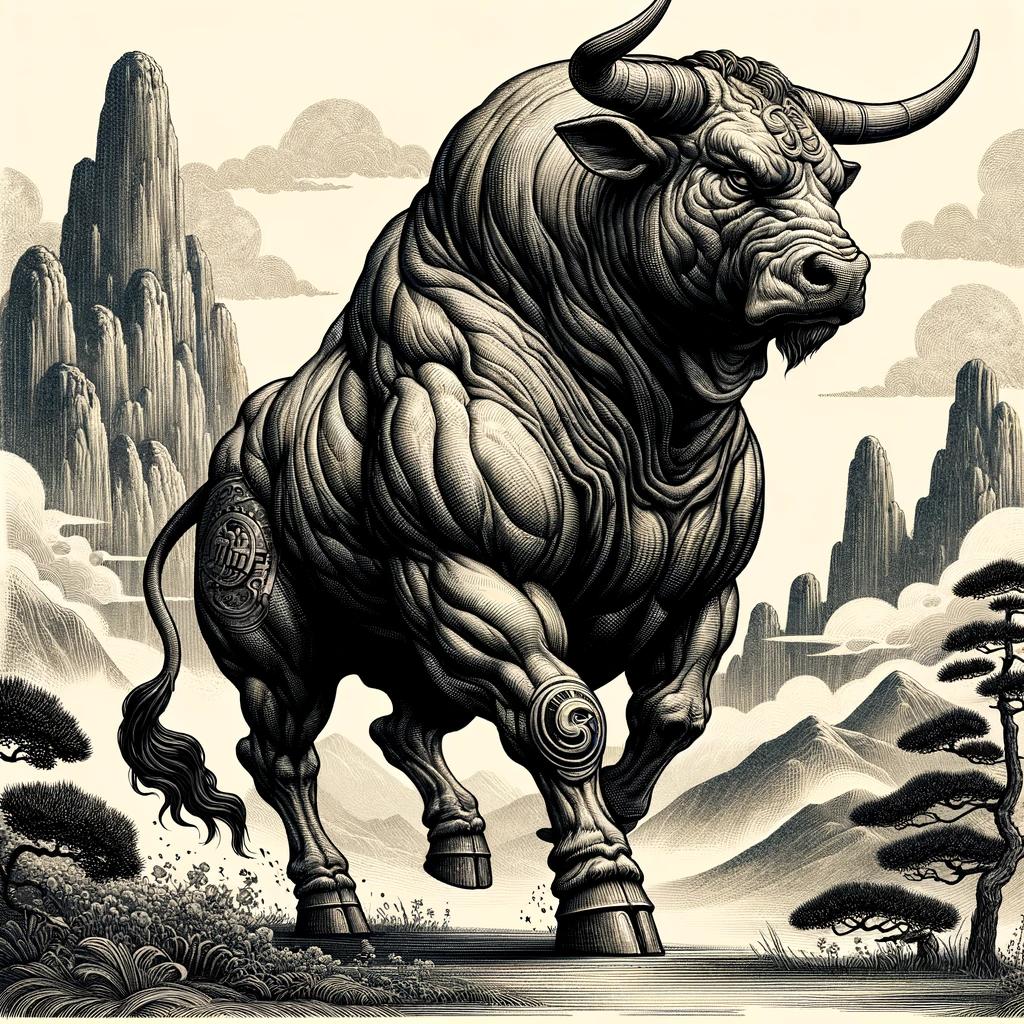
Kui in Chinese mythology encompasses various roles and representations in ancient Chinese folklore. This article provides an overview of Kui’s importance, including his association as the inventor of music and dance, as well as his depiction as a mountain demon or rain god, often linked with the majestic and mythical kui dragon.
The controversy surrounding Kui’s identity and his connection to other one-legged creatures in Chinese mythology is also explored. Additionally, Kui’s presence in ancient Chinese texts and his symbolic meanings in Chinese culture showcase his significant influence throughout history.
This includes his portrayal as the kui mythical beast, known as the kui niu mythology, reflecting his powerful attributes and connections to both the ground and celestial realms.
Overview of Kui Chinese Mythology
Kui in Chinese mythology is a fascinating world filled with enigmatic tales and mythical creatures, including the legendary kui animal. It encompasses various aspects of ancient Chinese folklore, exploring the multifaceted figure of Kui and his significance in Chinese culture and history, from the thunderous echoes of his voice to his steps that would shape the landscape.
Throughout the centuries, Kui has been depicted in different roles and forms, each carrying unique symbolism and meaning. From being the legendary musician credited with inventing music and dance to being a mysterious mountain demon or rain god, Kui’s presence is felt in diverse narratives and legends, including the kui tianxing, a term that highlights his influence over the wind and water.
His origins and importance in Chinese mythology remain a subject of speculation and debate, with differing interpretations found in classical Chinese texts such as Shujing, Chunqiu, and Guoyu.
The controversy surrounding Kui’s identity adds intrigue and depth to his character, often depicted as a powerful kui beast that commands respect and awe.
One intriguing aspect of Kui’s representation is his one-legged form, which he shares with other mythological creatures like Chi and Hui. The association of these one-legged beings generates further exploration into the symbolic meanings behind this unique feature, including his depiction as a one-legged mountain demon with the power to command the elements and influence the natural world around him.
Kui’s connection to the world of music and art cannot be understated. Worshiped as a master musician, his contributions and significance in the development of music and dance in ancient China are a testament to his creative prowess, with his musical inventions reflecting the harmony between the earth and the sky.
This article delves into the essence of Kui Chinese mythology, unraveling its mysteries layer by layer, and shedding light on the cultural and historical importance of this enigmatic figure.
Through a comprehensive exploration of Kui’s origins, various representations, controversies, and connections to other mythical creatures, we hope to provide a deeper understanding of the rich tapestry of Chinese folklore.
The Mythical Figure of Kui
Kui is an intriguing character in Chinese mythology, appearing in various contexts and roles. This section explores the origins and importance of Kui in Chinese mythology, the different representations associated with this mythical figure, and the controversy surrounding Kui’s identity.
Origins and Importance of Kui in Chinese Mythology
Nonetheless, Kui’s significance in the realm of music and art cannot be undermined. His legendary status is further embellished by tales of his fearsome form, often described as a kui cow or kui cattle, embodying the strength and perseverance of the land itself.
Kui, in Chinese folklore, represents more than just a mythical beast; he is a symbol of the intricate relationship between the natural world and cultural expression.
Different Representations of Kui
Kui is portrayed in various forms, showcasing his polymorphic nature. Depictions of Kui include a one-legged being resembling a Chinese dragon, a drum, or even a monkey with a human face, each representation rich with symbolic meaning and cultural significance.
The kui dragon, a prominent figure in hoki Chinese mythology, stands as a testament to the ancient civilization’s creativity and imagination.
These multifaceted representations highlight Kui’s ability to adapt and take on different forms, embodying the dynamic and ever-changing landscape of Chinese mythology. His image as a kui dragon or monster reflects the awe and respect he commands, representing the bridge between the earth, the wind, and the celestial realms.
This adaptability underlines the core question: what is a kui? In essence, it is a creature that transcends simple categorization, embodying various aspects of nature and human perception.
The Controversy Surrounding Kui’s Identity
There exists controversy and ambiguity regarding whether the mountain demon Kui and the music master Kui associated with Shun are the same entity. Some ancient texts are heterogeneous compositions with uncertain dating, which adds to the complexity of unraveling the true nature of Kui.
This duality of being both a kui beast and a legendary inventor highlights the rich tapestry of kui mythology.
Additionally, debates arise regarding the interpretation of the term “yizu” (one-legged) in relation to the Kui musician, further contributing to the discussions surrounding Kui’s identity and meaning. The kui animal, often depicted as a legged mountain creature, blurs the lines between myth and historical interpretation, fostering a deep sense of mystery and intrigue.
Kui as the Inventor of Music and Dance
Kui, a prominent figure in Chinese mythology, holds a significant role as the legendary musician credited with the invention of music and dance. His role extends beyond the creation of melodies, encompassing the profound impact of these arts on Chinese culture and beyond.
Kui’s Role as a Legendary Musician
Kui, shrouded in mystique and revered as a master of music, signifies the essence of creativity and artistic expression in Chinese mythology. Stories depict Kui as the divine being behind the creation of melodies that captivate and inspire, embodying the spirit of kui tianxing, which translates to the celestial nature of his musical influence.
Contributions and Significance of Kui in the World of Music
Kui’s contributions to the world of music extend beyond the mere invention itself. His melodies and compositions are believed to have transcended time, resonating with generations and leaving an indelible mark on Chinese musical heritage.
His role as a cultural icon in hoki Chinese mythology emphasizes the unity and harmony that music can bring to society.
Through his mythical existence, Kui embodies the power of music and its ability to convey emotions, tell stories, and unify communities. The kui niu mythology, with its emphasis on the strength and resilience of the kui cow, parallels the enduring nature of Kui’s musical legacy.
In conclusion, Kui’s role as the inventor of music and dance in Chinese mythology represents the transformative power of artistic expression. His contributions to the world of music resonate across time, shaping cultural heritage and inspiring generations of musicians.
Delving into Kui’s significance, we unearth the timeless allure of his melodies and the enduring impact of his creative spirit on both the ground of reality and the wind of imagination.
Kui as a Mountain Demon or Rain God
In Chinese mythology, Kui is celebrated not only for his innovations in music and dance but also revered as a formidable mountain demon or rain god, embodying the forces of nature.
His depictions vary, ranging from a one-legged creature that might sound like the roar of a buffalo and symbolizing his might, to forms resembling a Chinese dragon, a drum, or even a monkey with a human face.
These diverse representations of Kui in hoki Chinese folklore and chinese kui stories highlight his multifaceted nature and his capacity to assume various forms, echoing the diverse aspects of the natural world, from the solidity of the ground to the fluidity of water and the whisper of the wind.
The Various Depictions of Kui’s Form
Kui’s appearance is often described as a one-legged being, symbolizing his uniqueness and distinctiveness within the rich tapestry of Chinese mythology. This representation is captured by the Chinese character 夔, which is uniquely used to represent Kui.
Yet, the debate and ambiguity regarding Kui’s true depiction as having a single leg persist. Conflicting interpretations of the term yizu 一足, translating to “one-legged,” have sparked discussions about Kui’s physical form.
Some scholars argue that the term zu 足, also meaning “sufficient” or “enough,” could suggest a metaphorical interpretation, indicating Kui’s powerful presence as one large, encompassing entity rather than a literal one-legged creature.
The Association of Kui with One-Legged Creatures
Alongside Kui, Chinese mythology introduces other one-legged creatures, such as chi 螭, emblematic of a hornless dragon or mountain demon, and hui 虺, symbolizing a serpent or python. These entities, mentioned in ancient texts like the Shanhaijing, share a symbolic significance with Kui, suggesting a broader motif within Chinese mythology that venerates creatures with a singular leg, reflecting their significance in the cultural and mythological landscape.
This narrative enriches the folklore, weaving stories of Kui with those of the kui people, an ancient group possibly connected through shared myths or even a common language, perhaps hinting at the intricate web of stories, languages like the Dravidian language spoken by distant cultures, and myths that connect diverse civilizations.
Kui’s Connection to Other Chinese Mythological Creatures
The enigmatic figure of Kui in Chinese mythology shares significant ties with other one-legged creatures in ancient Chinese folklore, illustrating the interconnectedness of myths across different cultures. This section delves into the symbolic significance and fascinating comparisons between Kui and these mythical beings, shedding light on their intriguing connections and the collective imagination of ancient societies.
The Significance of Chi and Hui in Chinese Mythology
Within the pantheon of Chinese mythology, the creatures known as Chi and Hui occupy important roles. Chi, envisioned as a hornless dragon or mountain demon, and Hui, depicted as a serpent or python, share the unique characteristic of possessing only one leg with Kui, sparking speculation about their shared origins and symbolic meanings.
These connections underscore the rich fabric of Chinese mythology, where each creature, from the kui monster to the serpent-like Hui, plays a pivotal role in the storytelling tradition, embodying various natural elements and philosophical concepts.
Comparisons Between Kui and Other One-Legged Creatures
Examining the characteristics of Kui alongside other one-legged creatures offers insights into their similarities and differences. While Kui’s multiple representations attribute him with a dragon-like appearance, a drum, or even a monkey with a human face, Chi is depicted as a hornless dragon or demon, and Hui assumes the form of a serpent or python.
Despite their distinct characteristics, the shared attribute of a single leg among these entities raises intriguing questions about their origins and the potential cultural symbolism they carry within Chinese mythology, hinting at a deeper, perhaps universal theme of balance, adaptability, and the singular standing of certain beings in mythological narratives.
Kui in Ancient Chinese Texts
Kui’s presence in classical Chinese literature underscores his significant role in ancient Chinese culture and mythology. References to Kui can be found in esteemed texts such as the Shujing, Chunqiu, and Guoyu, offering glimpses into his various roles and interpretations over the millennia.
Kui’s Presence in Classical Chinese Literature
In the annals of classical Chinese literature, Kui emerges as a prominent figure, with his mythology woven into various literary works. His appearances in these texts not only reinforce his cultural importance but also highlight the enduring influence of his legend, from the mythic narratives of hoki Chinese folklore to the revered pages of ancient manuscripts.
Through these literary mentions, Kui’s legacy as a deity of music, rain, and the mountainous realms continues to inspire and captivate the imagination, bridging the gap between the mystical past and the present.
Chunqiu
The Chunqiu, or “Spring and Autumn Annals,” further contributes to the understanding of Kui’s place in ancient Chinese texts. Within these annals, Kui’s mythical existence intertwines with historical events, adding layers of complexity to his character and overall significance.
The Chunqiu offers a unique perspective on how Kui’s representations have evolved and adapted over time.
Guoyu
Another essential source for comprehending Kui’s depiction in classical Chinese literature is Guoyu, also known as the “Discourses of the States.” This compilation of historical texts explores how Kui’s multifaceted nature has been interpreted and analyzed, shedding light on the different perspectives and theories surrounding his identity and symbolism.
These texts collectively provide a rich tapestry of Kui’s presence in ancient Chinese literature, showcasing the enduring fascination and cultural relevance surrounding this enigmatic figure.
The Symbolic Meanings and Cultural Significance of Kui
Within Chinese culture, Kui holds multifaceted symbolism and carries significant cultural meaning.
His various representations and mythical roles have contributed to his symbolism in different aspects of Chinese society.
The Multifaceted Symbolism of Kui in Chinese Culture
Kui, as the legendary musician, embodies creativity, artistic expression, and the power of music and dance. His invention of music and his association with the arts symbolize the importance of cultural heritage and the role of creativity in Chinese society.
As a mountain demon or rain god, Kui’s symbolism extends to natural forces and their impact on human life. He represents the power and unpredictability of nature, reminding people of their vulnerability and dependence on the environment.
Furthermore, Kui’s one-legged form signifies resilience and adaptability in the face of challenges. This symbolism reflects the Chinese value of perseverance and the ability to overcome obstacles, serving as a reminder to embrace change and find strength in adversity.
Kui’s Influence on Chinese History and Folklore
Kui’s presence in ancient Chinese texts and his association with significant historical periods, such as the Tang Dynasty, highlight his role in shaping Chinese history and folklore. His mention in classical Chinese literature, such as Shujing, Chunqiu, and Guoyu, showcases the enduring impact of his character on traditional Chinese narratives.
Additionally, Kui’s connections to other Chinese mythological creatures, including the one-legged creatures Chi and Hui, further emphasize his role as a central figure in Chinese mythology. These associations contribute to the rich tapestry of Chinese folklore, weaving together different creatures and their symbolic meanings.
Overall, the symbolic meanings and cultural significance of Kui in Chinese culture demonstrate the profound impact of mythology on the collective imagination of the Chinese people. Kui’s multifaceted symbolism and his connections to history and folklore shape the understanding of creativity, nature, resilience, and adaptability within Chinese society.

